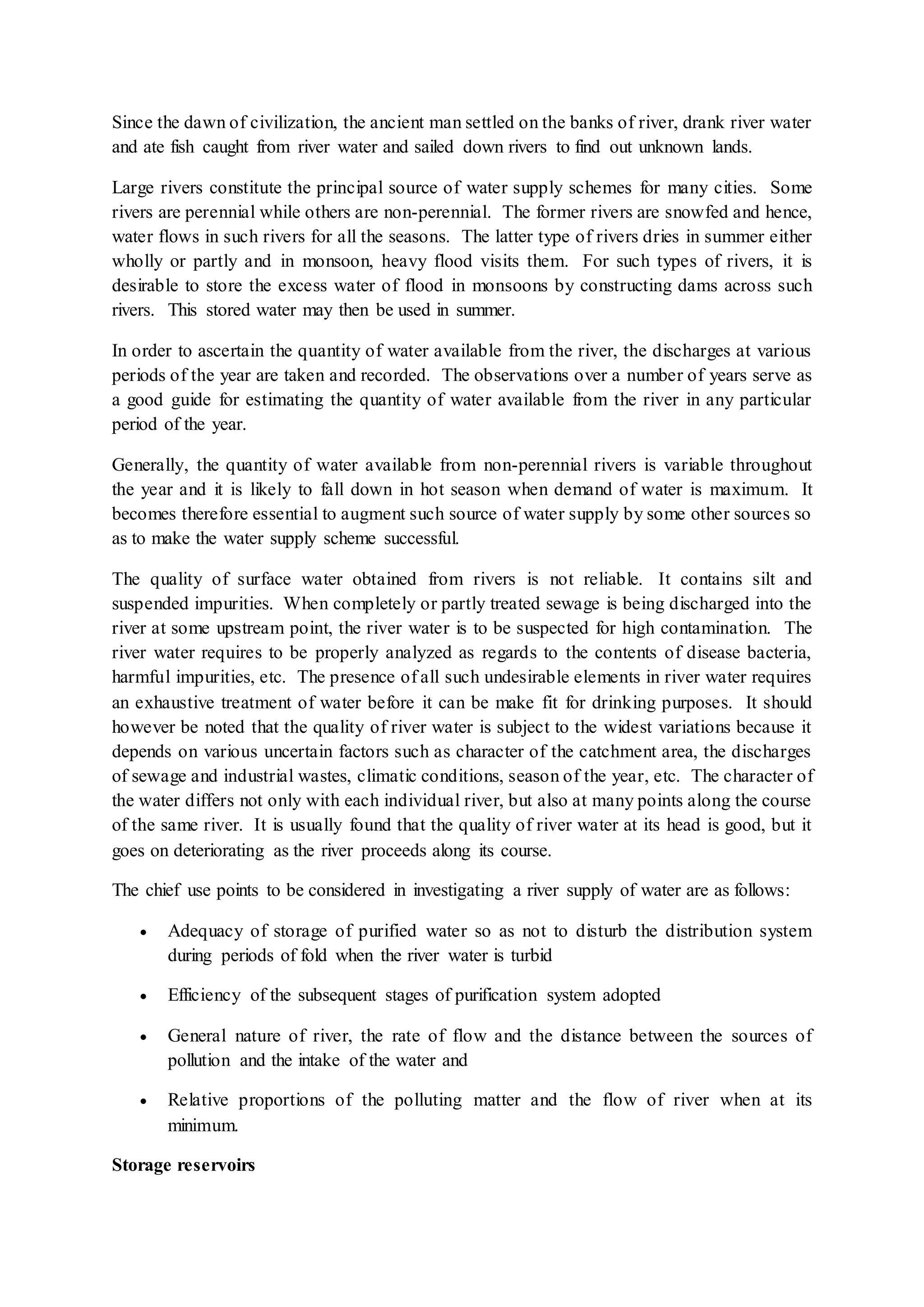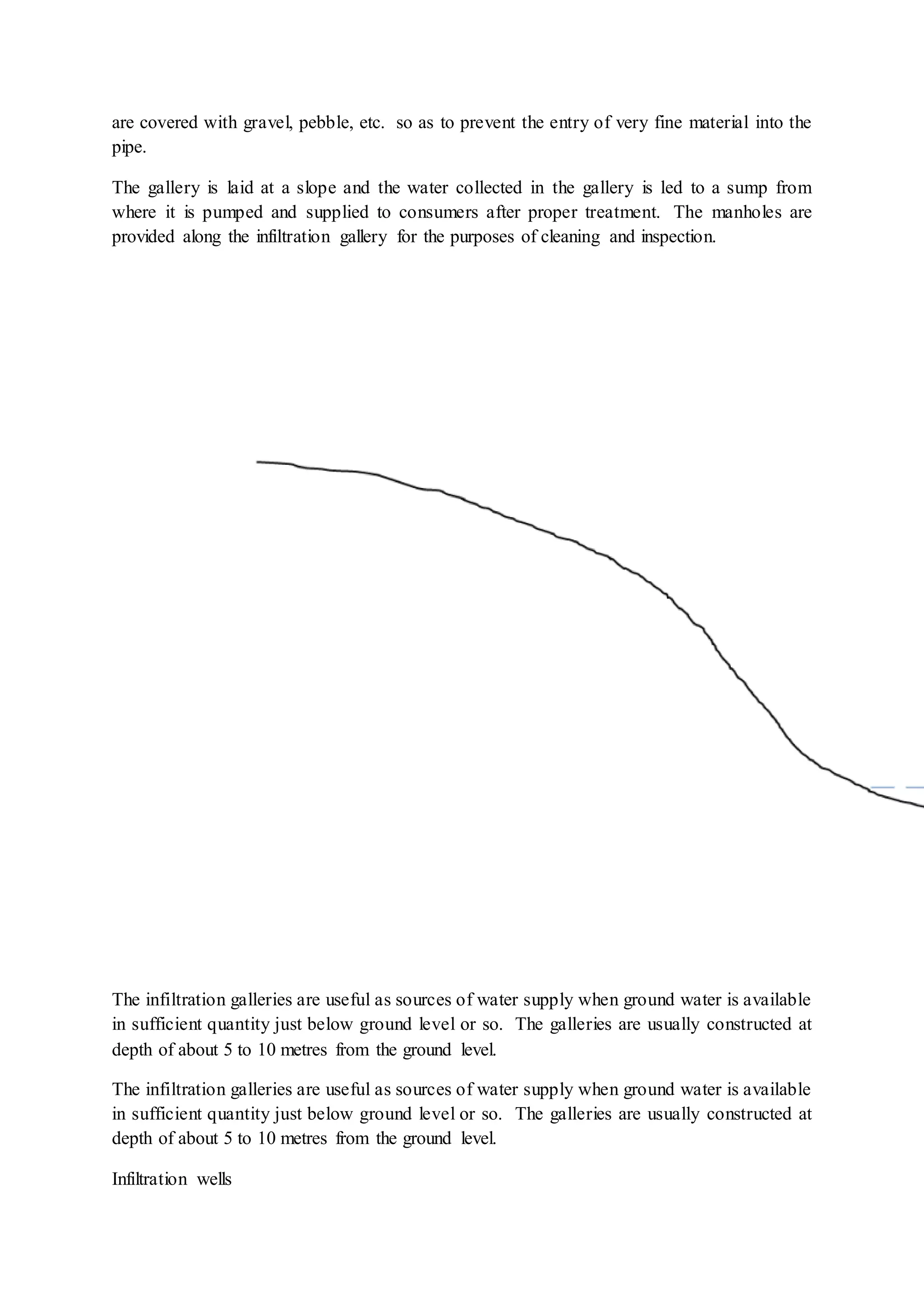This document discusses various sources of water supply, including surface sources like lakes, streams, ponds, rivers, and storage reservoirs, as well as underground sources like infiltration galleries, infiltration wells, springs, and wells. Surface water sources provide runoff and include bodies of water like lakes and rivers, but quality is variable. Underground sources supply groundwater through structures that collect percolated water below the surface. Each source has advantages and limitations for use as a municipal water supply.








